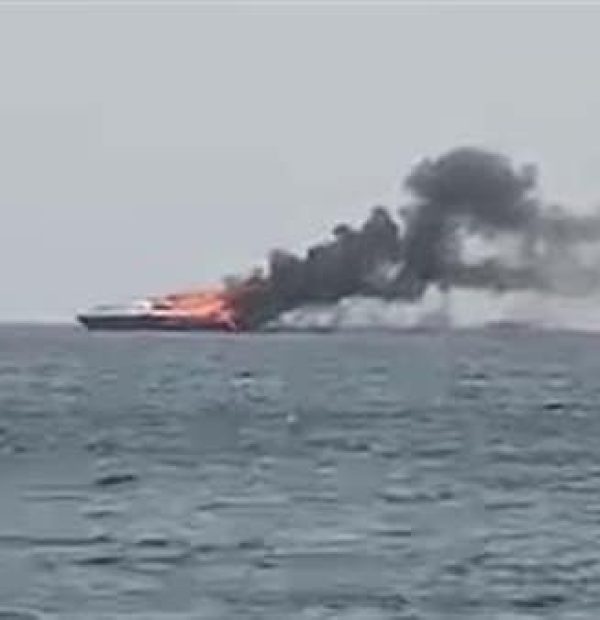Friday, 10 May 2024
Menu

On 26 January 1947, the ship set sail from Poland to Helsinborg in southern Sweden. In its holds it carried almost 1100 tonnes of coal. What happened to the ship and the 18 crew members? We can only guess at that. It is a fact, however, that the steamer, then called Sten Sture, sank and disappeared from the pages of history for thirty years.
The SS Mount Vernon was built in 1900 at the Bergen Mekaniske Verksteder shipyard. The company Irgens O. & A. & Co. With dimensions of 69m in length and 9.5m in breadth, the ship was designed from the beginning for the carriage of various goods. During the first 22 years of service, she sailed under the Norwegian flag. In 1922 she was sold to the Swedes and renamed Elizabet. Seven years later in 1929 another name change took place, when the company Rederi Ab Westindia became the new owner. The new name, Sverre Nergaard, remained until 1946, when the ship was resold for the last time. Rederi Ab Eruths gave the ship the name Sten Sture.
Despite the many changes of owners and names, when talking about this ship, the first one is permanently adopted. This is probably due to the events of March 1997, when Polish divers lifted a bell engraved with the name “Mount Vernon 1900 Bergen” from a wreck found 3 miles north of Rozewie. The dive was made from the boat Atocha, owned by Arek Petyński – the finder of the bell.
In fact, the facts relating to this unit end here. Everything else is conjecture and guesswork, based on a possible course of events. Nevertheless, they ignite curiosity and prompt many questions.
Apart from the most popular theory, which has been repeated since the 1960s, that the ship was washed up on a mine, the most puzzling is the route the captain decided to take to Helsinborg. At the time, it was much safer to sail most of the way through Swedish territorial waters than to follow the route chosen by the crew along the Polish coast, full of mines and sunken wrecks. Such behaviour can only prove one thing – SS Sten Strue most likely picked up fugitives from Poland along the way.
In my search for information on Mount Vernon, I came across two theories as to the identity of the cruise’s supernumeraries. The first – domestic and very plausible, is based on many similar cases. In the mid-1940s escapes from Poland became almost the norm. After the Communists won the rigged elections, everyone fled. The opposition, Home Army members, very broadly defined “enemies of the people”, for whom the Soviet authorities did not give a damn, but also ordinary people, who did not believe in a prosperous future under the wing of the USSR.
I came across a slightly different version of events in foreign sources, where it is suggested that the Sten Strue carried out a mission for the Swedish secret service. The ship was supposedly evacuating agents in the service of the Three Crowns country, who had managed to get to Poland from the USSR. Regardless of which story is more probable, they have a certain point of convergence. The exact point is that it was not a mine that caused the sinking of Mount Vernon, but a Soviet torpedo.
This theory seems to be supported by the examination of the wreck. If the damage caused by a mine collision was any indication, it would be the bow that would suffer the most damage, while this part of the Swedish merchant ship is one of the best preserved. However, the port side looks completely different. The place in the area of the bow hold, which is about 15-20m from the bow, looks as if it had traces of an explosion, for example caused by a torpedo.
I do not wish to venture too far into any of the theories given, but we cannot rule out such a development of events, where someone was brought on board the Sten Strue whom the Soviet authorities very much wanted to keep in People’s Poland. Whether on land or under water.
The story of Mount Vernon raises many questions, but perhaps one day we will know the answer to them? Why was there as many as 18 crew members on such a small vessel? Why was its route through decidedly rough waters? Where did the almost 1100 tons of coal go? Why wasn’t the name of the vessel determined when it was investigated in the late 1950s and 1970s? In 2009, a special investigation group, set up in Sweden at the request of the families of the crew of the sunken steamer, looked into the matter.
The dive itself is not particularly demanding. The depth at which we operate is 20-28m. The biggest danger are the broken nets which entangle the wreck. Nevertheless, it is definitely worth going to this location to see for yourself a vessel that hides so many mysteries. Situated firmly on the starboard side, it lies in the sandy bottom. The screw on the stern and the anchors in the bow are definitely worth attention. The middle part of the wreck is heavily devastated. The superstructures are missing, their remains can still be found buried in the bottom.










Welcome to DIVERS24.COM, your daily source of scuba news, freediving, scuba diving information, and equipment reviews. Our comprehensive coverage of the dive industry from A to Z provides you with all the latest scuba news, training updates, underwater photography tips, and everything else related to scuba diving. Whether you’re a beginner or an experienced diver looking for more knowledge about scuba gear or techniques – we’ve got it covered! With our in-depth articles written by experienced divers who have been there and done that, you are sure to find exactly what you need here at Divers24.com. Dive into scuba news today!
Underwater Media Sp. z o.o.
Szafarnia 11/F8,
80-755 Gdansk, Poland
Welcome to DIVERS24.COM, your daily source of scuba news, freediving, and scuba diving information. Sign in for a weekly news update and discount coupons for dive gear and apparel.
@2023 - underwatermedia.pl. All Right Reserved. Designed and Developed by Tworzenie stron internetowych Gdansk

The Divers24 portal is currently the largest online medium treating diving in Poland. Since 2010 we have been providing interesting and important information from Poland and around the world on all forms of diving and related activities.
Contact us: info@divers24.com